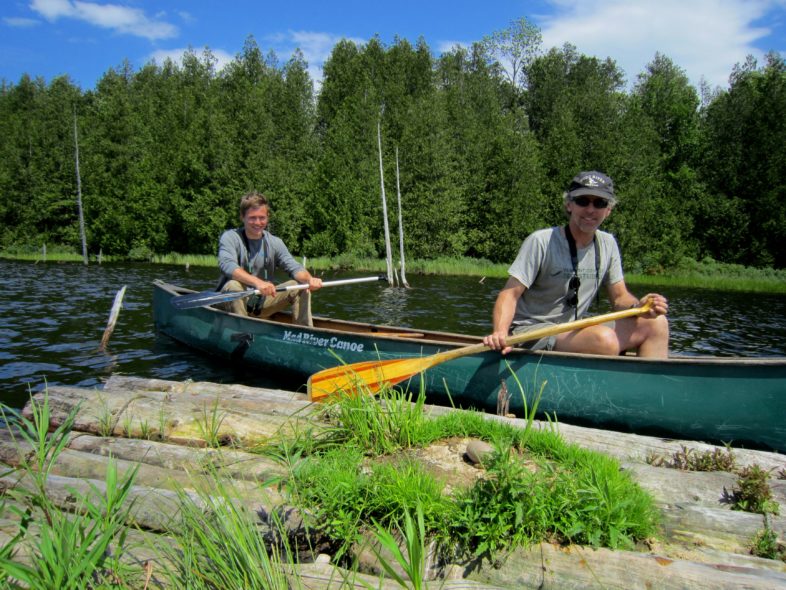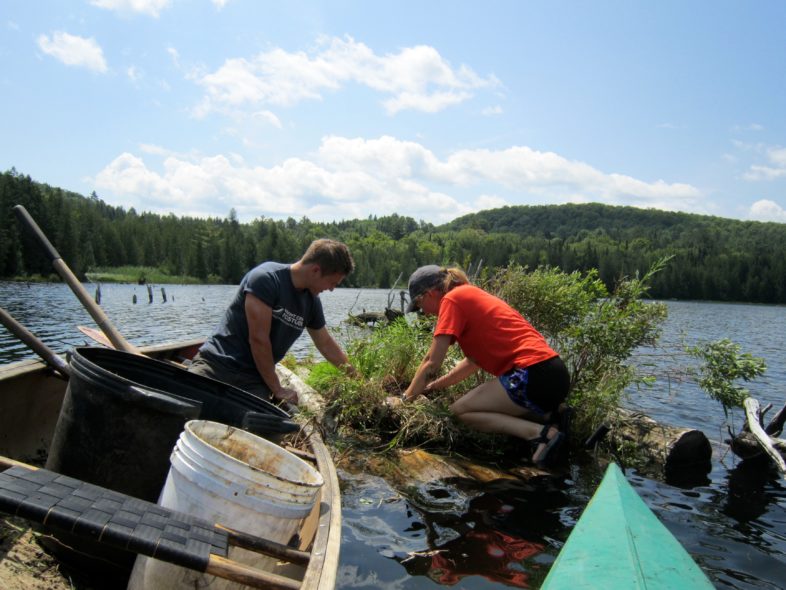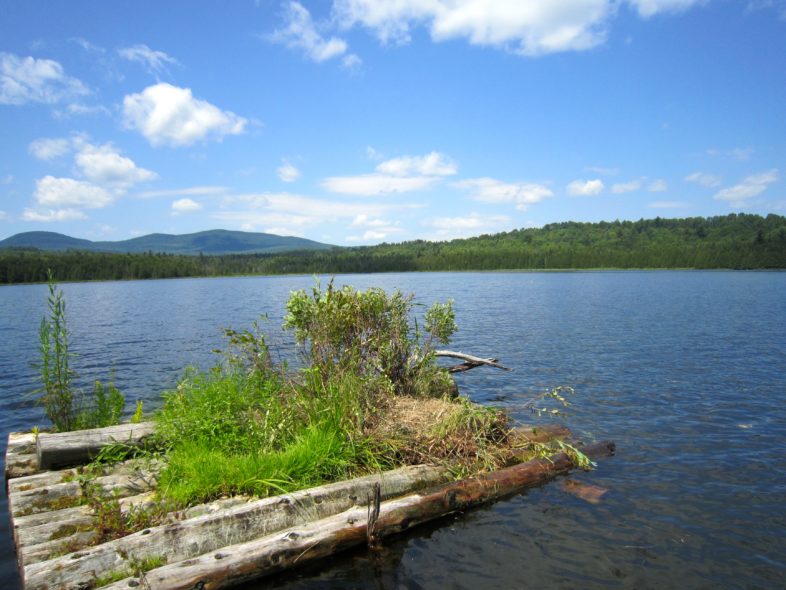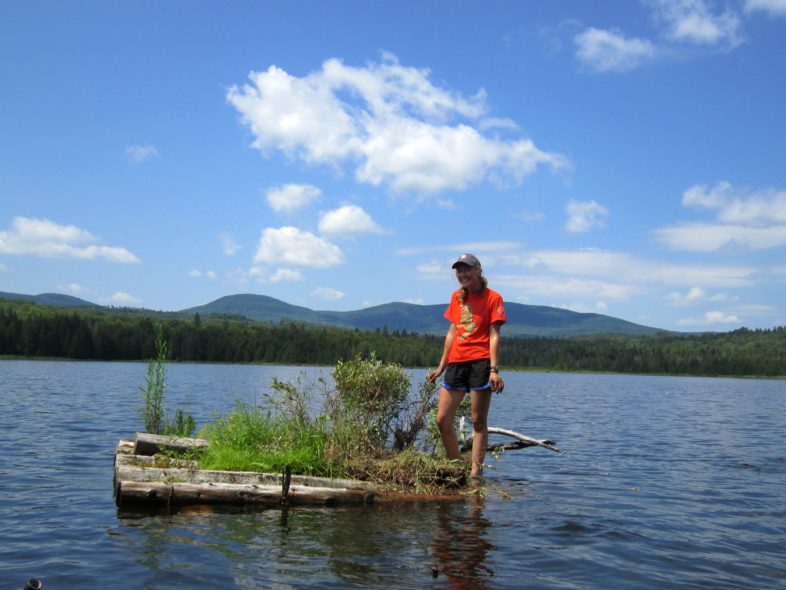While going about our routine surveys for loon chicks in late July, VCE’s loon biologist Eric Hanson, fellow intern Nate Launer and I found an unexpected and unique loon nest. I had visited Chandler Pond in Wheelock several times over the summer, but never managed to locate a shoreline nest site. On July 10, we confirmed that nesting had indeed occured with our discovery of a single loon chick being attended by its parents. A few days later, the three of us set out in a canoe and kayak, scouring the shoreline for signs of a nest bowl, hoping to get a sense of where the pair had nested, to better inform management plans for next year. After circling the entire lake without luck, we were prepared to abandon our search when we encountered what looked like an old, deserted swimming raft. Measuring about 5×10 feet and constructed of 12 logs strung together, the raft floated prominently in the water, partially disguised by a few patches of grass that must have colonized after years of disuse. Upon closer inspection, we realized that the raft had received some recent use after all: perfectly positioned on top was an unmistakable nest bowl encircled by a ring of grass, complete with an unhatched loon egg!

Nate Launer and Eric Hanson with their surprise discovery of a loon nest with one abandoned egg on a long-disused swimming raft on Chandler Pond, July 2017. Photo by Kirsti Carr.
Eric immediately went into detective mode and contacted his network of Chandler Pond volunteers, who confirmed that we had in fact found an old swim raft, constructed years ago by a family who had since moved away. With the volunteers’ encouragement, we returned to the raft and added some shrubs and herbaceous plants, as well as a solid load of mud, to give the loons more protection if they select it for nesting again next spring. Since the raft was pretty sizable (more than twice as large as the standard 4×4-foot loon nest raft VCE routinely places), I managed to clamber onto it and place the shrubs, even testing out the nest myself!

Nate Launer and Kirsti Carr rehabilitating an abandoned swimming raft for Chandler Pond’s loon pair, July 2017. Photo by Eric Hanson.
After a summer of building, maintaining, and moving nesting rafts at lakes and ponds all over the state, it was both intriguing and encouraging to see a loon pair set up shop on an entirely different type of raft. These floating platforms really do create ideal island habitat for loons – secure from land-based predators and fluctuating water levels. It is telling, too, that even without our help the Chandler Pond pair recognized this long-disused swimming raft as the most suitable spot for their nest. Hopefully with the modest habitat enrichment we did, next spring the pair will approve of its new and improved floating home, with better shielding from both boaters and predators and shade to minimize heat. Although Chandler Pond is one of Vermont’s smaller waterbodies to host nesting loons, it can now pride itself as having the largest, most distinctive loon raft in our state.

Chandler Pond’s rehabilitated loon nesting raft – easily Vermont’s largest – ready for use in 2018. Photo by Kirsti Carr.


Thank you for all your Hard work and Dedication. Loons will always be in my Heart.